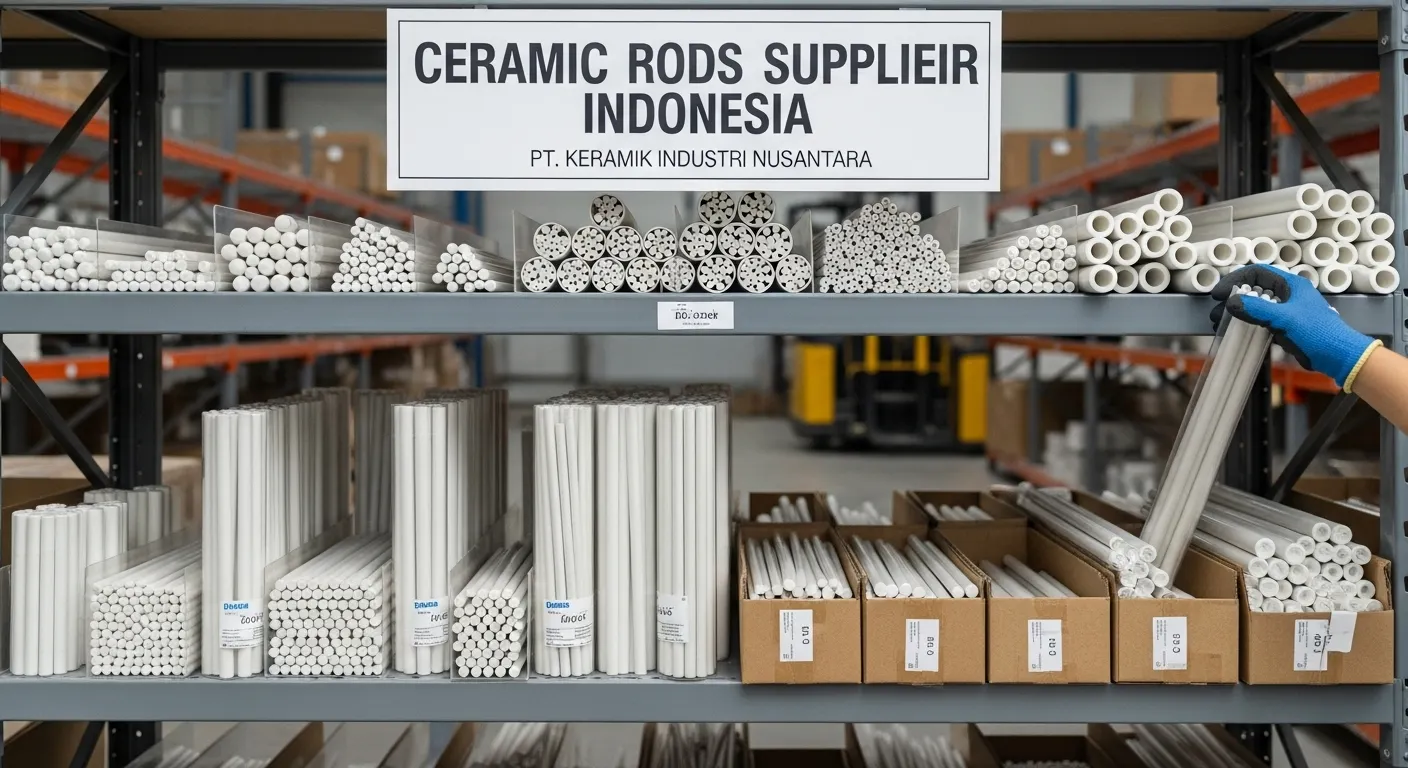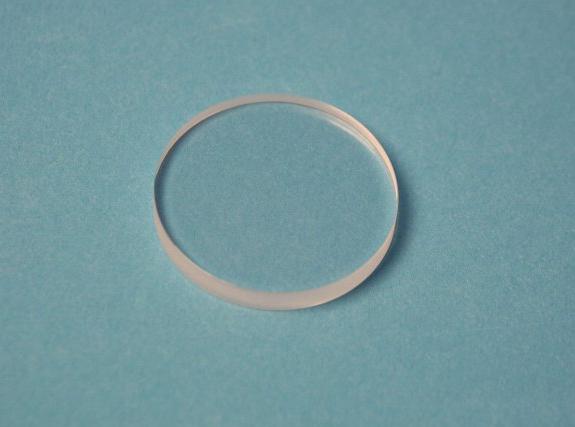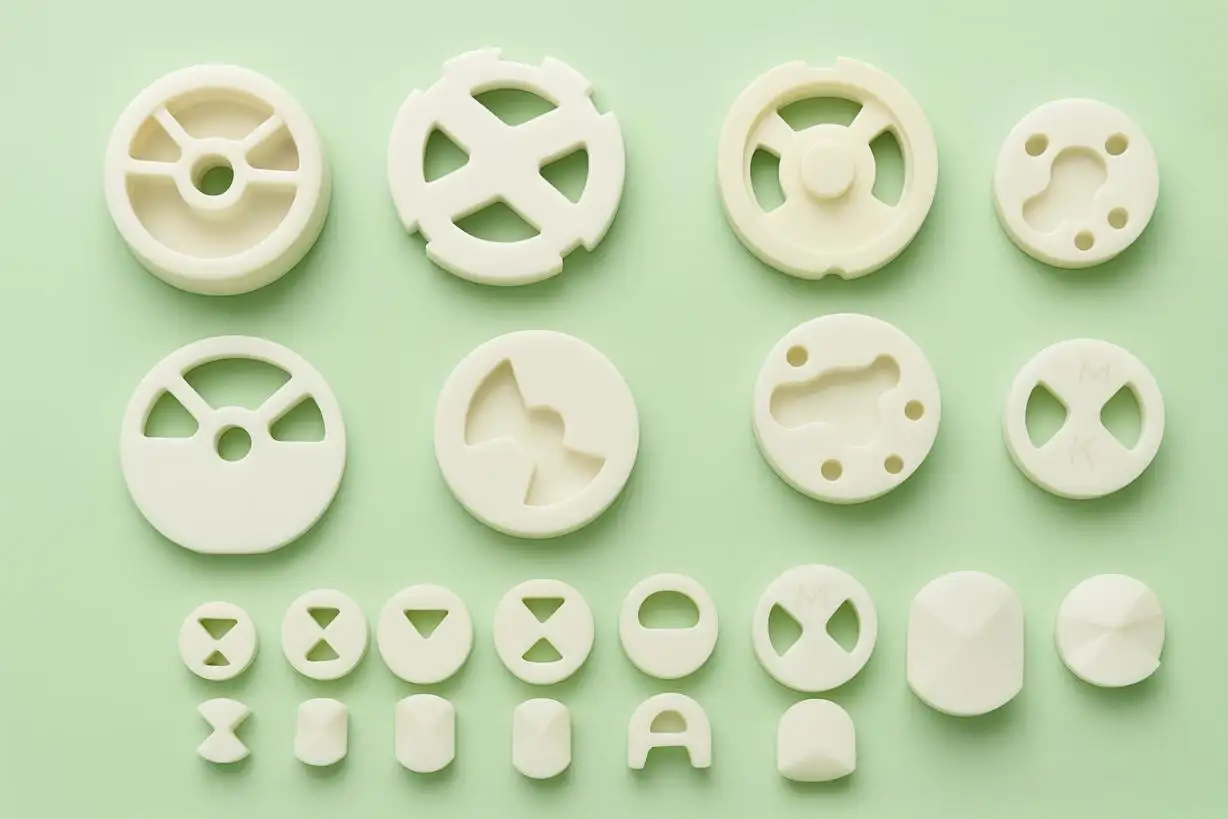Zirconia Ceramic Sleeve Supplier: A Sourcing Guide
Finding a qualified zirconia ceramic sleeve supplier is a critical engineering decision, not just a simple purchase. Zirconia is an advanced material, often called "ceramic steel," chosen for its unique combination of strength, toughness, and fine finish. These properties make it the only choice for demanding applications in fiber optics, medical devices, and industrial pumps.

This guide is designed for engineers, designers, and procurement teams. We will explore what makes Zirconia (ZrO2) a superior material. We will detail the manufacturing process and provide a clear framework for how to find and vet a supplier. This information will help you source a partner who can deliver consistent, high-quality components.
What Makes Zirconia (ZrO2) a "Super" Ceramic?
Not all ceramics are the same. A zirconia sleeve is a world apart from a traditional alumina or porcelain part. It is a high-performance component engineered from Zirconium Oxide powder.
What is a zirconia ceramic sleeve?
A zirconia ceramic sleeve is a high-performance tube made from Zirconium Oxide (ZrO2). It is prized for its extreme strength, fracture toughness, and smooth, polished surface. Industries use it for precision alignment (like fiber optics) and as durable, wear-resistant components in pumps and medical devices.
The "magic" of most zirconia components comes from a specific type: Yttria-Stabilized Zirconia (Y-TZP). Yttria is added to the material to stabilize its crystal structure. This stabilization process gives it a superpower called "transformation toughening."
If a microscopic crack starts to form, the material's crystal structure at the tip of that crack instantly changes. This change causes a localized expansion that pushes the crack closed. This is what makes Zirconia so incredibly resistant to chipping and breaking.
Key Properties of Zirconia
- Exceptional Fracture Toughness: This is its number one benefit. It is the toughest of all monolithic ceramics. It resists cracking where others (like Alumina) would shatter.
- High Strength and Hardness: It is extremely hard and resists wear, making it perfect for pump shafts and grinding media.
- Fine Grain Structure: Zirconia can be polished to a mirror-like finish (a very low surface roughness, or Ra). This is why it is the standard for fiber optic sleeves.
- Low Thermal Conductivity: It is a very good thermal insulator. It does not transfer heat well.
- Biocompatibility: It is non-toxic and does not react with the human body, making it a primary material for medical and dental implants.
- Similar Thermal Expansion to Steel: This is a key engineering benefit. It can be designed into metal assemblies, and it will expand and contract at a similar rate, reducing stress on the assembly.
The Showdown: Zirconia vs. Alumina Sleeves
Engineers often face a choice between Zirconia and Alumina (Aluminum Oxide). A good supplier will help you choose, but here is the core difference.
Zirconia vs Alumina sleeve: What is the difference?
The main difference between a zirconia and alumina sleeve is toughness versus temperature. Zirconia is far tougher and resists cracking, making it ideal for high-stress applications. Alumina is harder, more cost-effective, and has a much higher temperature resistance (1700°C+), making it better for furnace parts or high-voltage insulation.
Zirconia is the "tough" material. Alumina is the "high-heat" and "insulation" material.
Here is a simple comparison:
| Feature | Zirconia (ZrO2) | Alumina (Al2O3) | Silicon Carbide (SiC) |
| Fracture Toughness | Excellent | Fair | Good |
| Hardness (Wear) | Very High | High | Extreme |
| Max Temperature | Medium (~1000°C) | Very High (1700°C+) | High |
| Electrical Insulator | Good | Excellent | No (Conductive) |
| Cost | Medium-High | Low-Medium | High |
The bottom line: Choose Zirconia when your part needs to resist cracking, impact, or requires a perfect, polished surface. Choose Alumina when your primary concerns are extreme heat or high-voltage insulation.
Core Applications: Where Zirconia Sleeves Dominate
Zirconia is not a general-purpose material. It is a specialist. It is chosen for jobs that no other ceramic (or metal) can do.
1. Fiber Optics and Telecommunications
This is the largest market for zirconia sleeves. They are the single most important component inside fiber optic connectors (like SC, LC, and FC connectors).
- What they do: The sleeve is "split," allowing it to act as a precision spring. It captures the two fiber optic ferrules and aligns their microscopic cores perfectly.
- Why Zirconia? Its fine grain structure allows the inner bore to be polished to a perfect, smooth surface. This prevents scratching of the fiber. Its high toughness allows the split sleeve to be inserted and re-used thousands of time without breaking.
2. Medical and Dental Devices
Zirconia's biocompatibility makes it a standard in healthcare.
- Dental: Used to make crowns, bridges, and dental implants. It is strong, tough, and matches the color of teeth.
- Medical: Used in surgical tools, scalpels, and as bearing surfaces in joint replacements. It can be sterilized, is extremely hard, and does not wear out.
3. Industrial Pumps, Valves, and Processing
In harsh industrial settings, Zirconia replaces hardened steel.
- Pump Shafts and Sleeves: In pumps handling abrasive slurries (like mining or chemical processing), a zirconia sleeve on a steel shaft acts as the bearing surface. It will last 10-20 times longer than hardened steel.
- Valve Components: Zirconia balls and seats in ball valves create a perfect, wear-proof seal.
4. Manufacturing and Tooling
- Locating Pins: In automotive assembly lines, zirconia pins are used to align parts for robotic welding. They are tough and resist weld spatter.
- Extrusion Dies: Used to form metal or plastic, as the material is low-friction and does not wear.
How to Vet a Zirconia Ceramic Sleeve Supplier
This is the most important part of this guide. A good supplier is a manufacturing partner. A bad supplier is a reseller who does not understand the material.
How to find a good zirconia ceramic sleeve supplier?
To find a good zirconia ceramic sleeve supplier, first verify their material expertise. Ask if they use Yttria-stabilized Zirconia (Y-TZP). Then, check their manufacturing capabilities, especially their in-house diamond grinding and polishing. Finally, demand quality reports, like a Certificate of Conformance.
Step 1: Manufacturer vs. Distributor (The Big Filter)
Your first question must separate the makers from the sellers.
- A Manufacturer: Has their own factory. They control the process from powder to part. They have engineers on staff.
- A Distributor/Trader: Is a middle-man. They buy from a factory (or multiple factories) and resell to you. They have no control over quality or lead times.
How to tell the difference:
- Ask for a factory tour. A manufacturer will be proud to show you (even on a video call). A trader will make excuses.
- Ask specific technical questions. "What sintering temperature do you use for your Y-TZP?" "What is your typical concentricity tolerance on a 1.25mm ID sleeve?" A manufacturer will answer. A trader will say, "I have to check with our engineer."
- Ask for their business license. The "business scope" will clearly state "manufacturing" or "production."
Step 2: Verify Their Material Expertise
Not all zirconia is the same.
- Ask them: "What grade of Zirconia do you use?"
- Good Answer: "We use a 3-mol% Yttria-Stabilized Zirconia, or 3Y-TZP. We can provide the material data sheet."
- Bad Answer: "White ceramic. It is very strong."
If they do not understand Y-TZP, they are not a specialist. They cannot guarantee the material's toughness.
Step 3: Audit Their Manufacturing and QC Capabilities
This is the technical deep-dive.
- Forming: Do they use Ceramic Injection Molding (CIM) or dry pressing? CIM is a modern, advanced method for making complex, high-volume parts with great consistency.
- Sintering: Do they have their own high-temperature kilns? Controlling the sintering process is key to achieving the correct density and strength.
- Machining (The Most Important Check): Ask them, "Do you have in-house diamond grinding and lapping?"
- Why this matters: Sintered zirconia is one of the hardest materials. It can only be machined with diamond tools. A supplier who outsources their grinding has no control over the final precision or quality. This is a non-negotiable.
- Quality Control (QC): How do they check their work? Ask what equipment they have.
- Dimensional: Do they have a CMM (Coordinate-Measuring Machine), laser micrometers, or video inspection systems?
- Surface: Do they have a profilometer to measure surface roughness (Ra)? This is vital for polished parts.
- Visual: Do they perform 100% microscopic inspection for cracks and chips?
Step 4: Demand Data (The Proof of Quality)
Talk is cheap. Data is proof.
- Ask for samples. This is a basic first step.
- Ask for their ISO 9001 Certificate. This shows they have a basic quality management system in place.
- Ask for a Certificate of Conformance (CoC). This is a document they send with your order. It legally certifies that the parts in the box meet the specifications on your drawing.
- For custom parts: Ask if they provide a First Article Inspection Report (FAIR). This is a detailed report measuring every single dimension on your drawing for the first part they produce.
A supplier who is proud of their quality will have no problem providing this data. A supplier who cuts corners will resist.
The Manufacturing Process: From Powder to Precision Part
Understanding how a zirconia sleeve is made helps you appreciate the skill involved.
How are zirconia sleeves made?
Zirconia sleeves are made by first mixing fine Zirconium Oxide powder with a binder. This paste is formed using injection molding. The "green part" is then fired at high heat (sintered) to become incredibly hard. Finally, it is precision-ground and polished with diamond tools to achieve its exact final dimensions.
- Raw Material: It starts with ultra-fine Y-TZP powder. This powder is mixed with a proprietary polymer binder to create a "feedstock."
- Forming (CIM): The feedstock is heated and injected under high pressure into a mold. This creates the "green part." It is larger than the final part and has the consistency of hard soap.
- Debinding: The green part is put through a low-temperature process to slowly remove the polymer binder.
- Sintering: The "brown part" is now placed in a high-temperature kiln (1400-1500°C). The part shrinks significantly (up to 25%) and fuses into a solid, incredibly dense ceramic. This is the most critical step for strength.
- Grinding & Polishing: The sintered part is now hard, but its dimensions are not precise. It is moved to the grinding department. Diamond-coated wheels and tools grind the inner and outer diameters. For a mirror finish, it is lapped with a fine diamond slurry.
Sourcing Zirconia Sleeves: A Global Market
Your search for a supplier will be global. Different regions have different strengths.
- China: The world's largest producer, especially for high-volume fiber optic sleeves. The quality can range from excellent to poor. Vetting is absolutely critical.
- USA: The market for ceramic sleeves in the USA is very strong in medical, defense, and aerospace applications. Suppliers are known for high quality, R&D, and compliance (e.g., ITAR, FDA).
- Japan: A leader in raw material (the best Zirconia powders) and ultra-high-precision, next-generation components.
- Germany & Europe: Known for precision engineering for industrial automation, automotive, and high-end machinery.
- Emerging Markets: Demand in industrial hubs is growing. A company sourcing ceramic sleeves in Indonesia for a local factory, for example, needs a supplier who can support that region.
Related Ceramic Components
Zirconia is the answer for toughness, but it is not the only advanced ceramic. A good supplier often has expertise in other materials.
- For high-temperature applications, like furnace liners, you would not use Zirconia. You would look for ceramic tube sleeves, like those found in Indonesia, which are typically made of Alumina.
- For flexible insulation around high-heat pipes, a solid sleeve will not work. You would need a woven ceramic fiber sleeve, often from Japan.
- These flexible parts are part of a larger family of ceramic fiber components found in Indonesia and other industrial regions.
- For a complete overview of all sleeve types, this ceramic sleeves guide is an excellent resource.
- The future of these materials lies in composites, such as Ceramic Matrix Composites (CMCs), which combine fibers and ceramic to create even tougher parts.
What is the most common failure mode for Zirconia?
While extremely tough for a ceramic, zirconia can still fail. The most common failure is fracture from a sharp, sudden impact (mechanical shock). It can also fail from "low-temperature degradation" (LTD) if the wrong grade is used in a high-humidity environment, but modern Y-TZP grades have largely solved this.
Final Checklist for Your Supplier Search
Finding the right zirconia ceramic sleeve supplier is a process of verification. Use this checklist to make your final decision.
- [ ] Are they a manufacturer or a trader? (Confirm with a video tour).
- [ ] Do they understand and use Y-TZP? (Ask for the material data sheet).
- [ ] Do they have in-house diamond grinding? (Ask for photos of their equipment).
- [ ] Do they have a robust QC lab? (CMM, Profilometer, etc.).
- [ ] Will they provide a Certificate of Conformance (CoC) with every order?
- [ ] Do their samples pass your internal testing?
If you can check all these boxes, you have not just found a supplier. You have found a long-term manufacturing partner.
In This Article
- 1 What Makes Zirconia (ZrO2) a "Super" Ceramic?
- 2 The Showdown: Zirconia vs. Alumina Sleeves
- 3 Core Applications: Where Zirconia Sleeves Dominate
- 4 How to Vet a Zirconia Ceramic Sleeve Supplier
- 5 The Manufacturing Process: From Powder to Precision Part
- 6 Sourcing Zirconia Sleeves: A Global Market
- 7 Related Ceramic Components
- 8 Final Checklist for Your Supplier Search
 English
English 中文
中文





